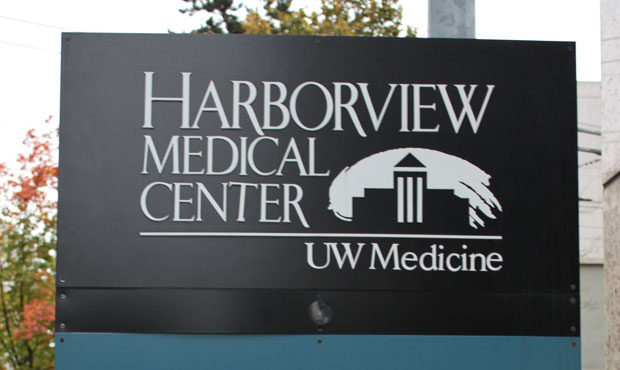Harborview hospitals to glow green to shine light on youth suicide
Nov 18, 2020, 12:25 PM

Harborview Medical Center in Seattle. ()
()
Harborview Medical Center hospitals across the country will be bathed in green light Wednesday as they inaugurate National Injury Prevention Day.
Bodily injuries remain the leading cause of death and suffering among U.S. kids and teens. Every day, 20 children die from preventable injuries, more than every other disease combined. At the same time, the nation’s second leading cause of death among people ages 10 to 24 is suicide.
In Washington state, suicides are up over the past six years; throw in the pandemic and the toll that it’s likely taking on young people, and what better time to shine a light on youth suicide prevention?
“In our area, we’re of youth and adolescent suicide,” said UW Medicine pediatrician and Harborview Injury Prevention and Research Center co-director Dr. Beth Ebel,
“This is a difficult time. We want families to know that suicide is preventable, and we all have a role to play,” she added, explaining the local partnership on the effort between Harborview’s and , which includes a new digital toolkit known as .
That acronym stands for: Look for signs, Empathize and listen, Ask directly about suicide, Remove the dangers, and take Next steps.
The toolkit is full of resources for teachers, parents, and all of us, including videos information about what to look for how to have these difficult conversations and much more, one of the biggest things you can do is take the easy step of safely storing dangerous items in your home, so kids can’t get their hands on it. That is especially important given what we know about suicide.
“I’ve taken care of many patients over the years at Harborview, teenagers who have tried to commit suicide, and it strikes you in the individual case, and this is true for the data,” Ebel said. The actual act is very impulsive. Most of the time, less than an hour has passed between when someone feels that moment of real despair and takes action. It’s very little time, and so what that reminds me as a parent is that being a teenager is stressful. There’s a lot of things that make you feel down and that might even be the case more right now.”
That’s why removing the dangers is so important, including locking up prescription medication, and locking up firearms to remove the opportunity for young people who may be in that crucial hour of impulsive decision-making when times are tough.
You can find all of that information and those resources in their toolkit. Dr. Ebel says one of the most crucial parts of this is watching out for signs of what those can look like.
“If you are noticing talk about suicide, even in a joking way or that you felt your child was feeling more hopeless or down, problems with sleep isolating more than usual, more than we’ve been told to do. Those are signs that can be a concern,” explained Ebel.
Those moments are also an opportunity for conversation that could make all the difference, albeit a difficult one to have that can make parents uncomfortable. The toolkit offers solutions for that.
You can find the toolkit and more information , along with all of the videos for these discussions and much more. According to Ebel, these apply to preventing not just youth suicide, but really anyone who may be struggling, especially given the very difficult times the pandemic has brought between job losses, uncertainty, and isolation.
Additional resources include The National Suicide Prevention Lifeline at 1-800-273-8255.
Follow Hanna Scott on or email her here.��














